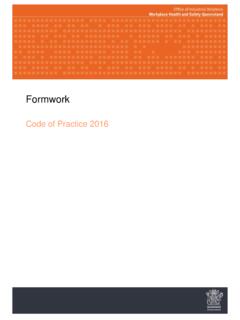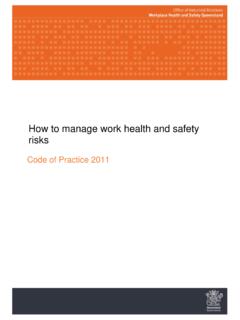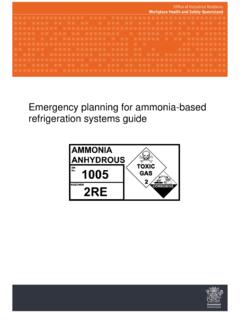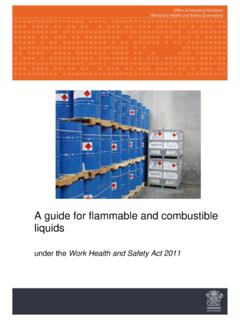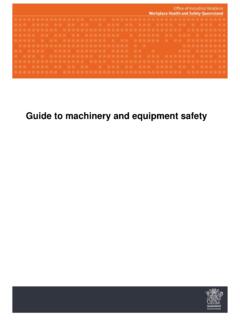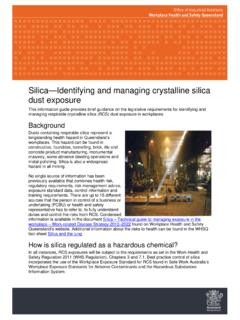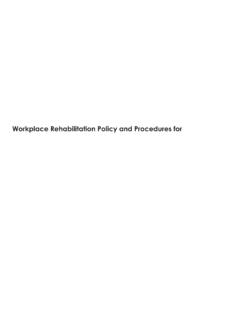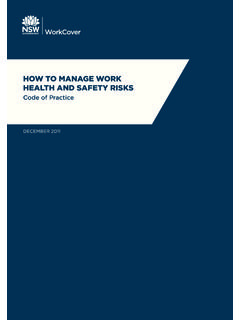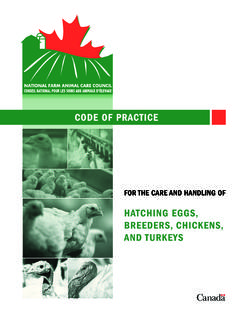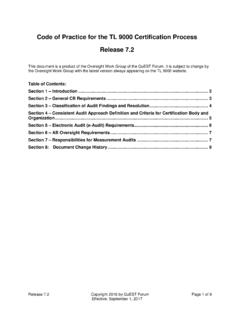Transcription of Code of Practice 2018 - worksafe.qld.gov.au
1 Managing the risk of falls at workplaces code of Practice 2018 Managing the risk of falls at workplaces code of Practice 2018 (PN12365) Page 2 of 47 This code is based on a national model code of Practice developed by Safe Work Australia and approved by the Workplace Relations Ministers Council on 10 August 2011 as part of the harmonisation of work health and safety laws. This Queensland code of Practice was made by the Minister for Education and Industrial Relations on 1 July 2018. This code commences on 1 July 2018. Creative Commons This copyright work is licensed under a Creative Commons Attribution-Noncommercial Australia licence. To view a copy of this licence, visit In essence, you are free to copy, communicate and adapt the work for non-commercial purposes, as long as you attribute the work to Safe Work Australia and abide by the other licence terms.
2 Managing the risk of falls at workplaces code of Practice 2018 (PN12365) Page 3 of 47 Contents Foreword .. 4 Scope and application .. 4 1. Introduction .. 5 Who has health and safety duties in relation to falls? .. 5 The meaning of key terms .. 5 What is required to manage the risk of falls? .. 6 2. Managing the risk of falls .. 7 How to identify fall hazards .. 7 How to assess the risk .. 8 How to control the 8 How to review control measures .. 10 3. Work on the ground or on a solid construction .. 10 Work on the ground .. 11 Work on a solid construction .. 11 4. Fall prevention devices .. 15 Temporary work platforms .. 15 Perimeter guard rails .. 22 Safety mesh .. 22 5. Work positioning systems .. 24 Industrial rope access systems .. 24 Restraint technique .. 25 6. Fall-arrest systems .. 27 Catch platforms .. 27 Industrial safety nets .. 28 Individual fall-arrest systems.
3 28 Anchorage lines or rails .. 32 7. Ladders .. 34 Portable ladders .. 34 Fixed ladders .. 37 Ladder maintenance .. 38 8. Administrative controls .. 39 9. Emergency procedures for falls .. 41 Emergency procedures .. 41 Suspension intolerance .. 42 10. Design of plant and structures .. 42 Design considerations .. 43 Plant .. 43 Buildings and structures .. 44 Appendix A Terms used in fall control measures .. 46 Appendix B References and other information sources .. 47 Managing the risk of falls at workplaces code of Practice 2018 (PN12365) Page 4 of 47 Foreword This code of Practice on how to manage the risk of falls in the workplace is an approved code of Practice under section 274 of the Work Health and Safety Act 2011 (the WHS Act). An approved code of Practice is a practical guide to achieving the standards of health, safety and welfare required under the WHS Act and the Work Health and Safety Regulation 2011 (the WHS Regulation).
4 From 1 July 2018 duty holders are required to comply either with an approved code of Practice under the WHS Act or follow another method, such as a technical or an industry standard, if it provides an equivalent or higher standard of work health and safety to the standard required in the code . A code of Practice applies to anyone who has a duty of care in the circumstances described in the code . In most cases, following an approved code of Practice would achieve compliance with the health and safety duties in the WHS Act, in relation to the subject matter of the code . Like regulations, codes of Practice deal with particular issues and do not cover all hazards or risks that may arise. The health and safety duties require duty holders to consider all risks associated with work, not only those for which regulations and codes of Practice exist. Codes of Practice are admissible in court proceedings under the WHS Act and WHS Regulation.
5 Courts may regard a code of Practice as evidence of what is known about a hazard, risk or control and may rely on the code in determining what is reasonably practicable in the circumstances to which the code relates. Compliance with the WHS Act and WHS Regulation may be achieved by following another method, such as a technical or an industry standard, if it provides an equivalent or higher standard of work health and safety than the code . An inspector may refer to an approved code of Practice when issuing an improvement or prohibition notice. This may include issuing an improvement notice for failure to comply with a code of Practice where equivalent or higher standards of work health and safety have not been demonstrated. This code of Practice has been developed by Safe Work Australia as a model code of Practice under the Council of Australian Governments Inter-Governmental Agreement for Regulatory and Operational Reform in Occupational Health and Safety for adoption by the Commonwealth, state and territory governments.
6 Scope and application This code applies to all workplaces covered by the WHS Act and WHS Regulation where there is a risk of a fall by a person from one level to another that is reasonably likely to cause injury. This code provides practical guidance to persons conducting a business or undertaking, including those persons who design, construct, import, supply or install plant or structures, on how to manage health and safety risks arising from falls. It includes information on a range of control measures to eliminate or minimise the risks. How to use this code of Practice In providing guidance, the word should is used in this code to indicate a recommended course of action, while may is used to indicate an optional course of action. Managing the risk of falls at workplaces code of Practice 2018 (PN12365) Page 5 of 47 This code also includes various references to sections of the WHS Act and WHS Regulation which set out the legal requirements.
7 These references are not exhaustive. The words must , requires or mandatory indicate that a legal requirement exists and must be complied with. 1. Introduction Falls are a major cause of death and serious injury in Australian workplaces. Fall hazards are found in many workplaces where work is carried out at height, for example stacking shelves, working on a roof, unloading a large truck or accessing silos. Falls can also occur at ground level into holes, for example trenches or service pits. Who has health and safety duties in relation to falls? A person conducting a business or undertaking (PCBU) has the primary duty under the WHS Act to ensure, as far as reasonably practicable, that workers and other persons are not exposed to health and safety risks arising from the business or undertaking. A person conducting a business or undertaking has more specific obligations under the WHS Regulation to manage the risk of a fall by a person from one level to another, including requirements to: ensure, so far as is reasonably practicable, that any work involving the risk of a fall is carried out on the ground or on a solid construction provide safe means of access to and exit from the workplace minimise the risk of falls so far as is reasonably practicable by providing a fall prevention device, work positioning system or a fall arrest system.
8 Designers, manufacturers, suppliers, importers and installers of plant or structures that could be used for work must ensure, so far as is reasonably practicable, that the plant or structure is without risks to health and safety. Designers of plant or structures have an important role in eliminating or minimising the risks of falls in the design stage (see Chapter 11 of this code ). Officers, such as company directors, have a duty to exercise due diligence to ensure that the business or undertaking complies with the WHS Act and WHS Regulation. This includes taking reasonable steps to ensure that the business or undertaking has and uses appropriate resources and processes to eliminate or minimise risks of falls from one level to another that are likely to cause injury. Workers have a duty to take reasonable care for their own health and safety and that they do not adversely affect the health and safety of other persons.
9 Workers must comply with any reasonable instruction given by the person conducting the business or undertaking. The meaning of key terms Fall means a fall by a person from one level to another. Risk of a fall means a circumstance that exposes a worker while at work, or other person while at or in the vicinity of a workplace, to a risk of a fall that is reasonably likely to cause injury to the worker or other person. This includes circumstances in which the worker or other person is: in or on plant or a structure that is at an elevated level in or on plant that is being used to gain access to an elevated level in the vicinity of an opening through which a person could fall in the vicinity of an edge over which a person could fall on or in the vicinity of a surface through which a person could fall on or near the vicinity of a slippery, sloping or unstable surface. Managing the risk of falls at workplaces code of Practice 2018 (PN12365) Page 6 of 47 Risk control means taking action to eliminate health and safety risks so far as is reasonably practicable, and if that is not possible, minimising the risks so far as is reasonably practicable.
10 Eliminating a hazard will also eliminate any risks associated with that hazard. Competent person means a person who has acquired through training, qualification or experience the knowledge and skills to carry out the task. Further definitions relating to fall control measures are listed in Appendix A. What is required to manage the risk of falls? WHS Regulation 34-38: In order to manage risk under the WHS Regulation, a duty holder must: identify reasonably foreseeable hazards that could give rise to the risk eliminate the risk so far as is reasonably practicable if it is not reasonably practicable to eliminate the risk minimise the risk so far as is reasonably practicable by implementing control measures in accordance with the hierarchy of control maintain the implemented control measure so that it remains effective review, and if necessary revise, risk control measures so as to maintain, so far as is reasonably practicable, a work environment that is without risks to health and safety.
